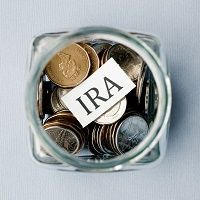Article
Self-Employed Can Still Cut 2014 Taxes with a Retirement Plan
Author(s):
If you haven't filed your 2014 return, you can get a deduction for retirement plan contributions until October.

Self-employed people—from Uber drivers to high-powered consultants—need to save for retirement, and a tax-advantaged retirement plan is the best way. Designed for the self-employed, the Simplified Employee Pension (SEP-IRA) and the Solo 401(k) are relatively easy to set up. Both plans offer tax-deductible contributions, enabling you to cut your taxes and get tax-deferred growth.
Another plus: you can still reduce your 2014 federal income taxes because either plan allows you to contribute up until your tax-filing deadline, including the six-month extension. If you got an extension and haven’t filed your return yet, you have until Oct. 15 to make 2014 contributions to your plan.
However, while a SEP-IRA can still be established up until Oct. 15, those who wish to make a profit-sharing contribution to a Solo 401(k) must have established the plan by Dec. 31, 2014.
Which plan is best for you? Here are the main features and the pros and cons of each.
is similar to a traditional IRA. Investment earnings grow taxed-deferred until withdrawal, but self-employed individuals can save and deduct much more than the $5,500 ($6,500 if 50 and over) for contributions to a traditional IRA. SEP-IRA contribution limits are the lesser of 20% of net business income or $52,000 for 2014, $53,000 for 2015.
A SEP-IRA
Banks, insurance companies and brokerage firms offer SEP-IRAs, which often can be opened up on the Web. Make sure the sponsor offers a range of solid investment options.
One caveat: if you have employees, you must contribute the same percentage of salary for them as you do for yourself. If you can’t afford to or don’t want to do that, a SEP-IRA isn’t the best plan for you.
Since SEP-IRA contributions are deemed to come from the business, not the individual, a participant can also contribute to a Roth IRA in the same year he or she makes a SEP-IRA contribution.
By contributing to both, you can take advantage of tax-free Roth IRA growth and increase the tax diversification of your retirement savings and have more flexibility when you’re taking out money during retirement.
is for self-employed individuals without employees, other than a spouse, who may contribute to the plan if he or she is employed by the business. It can be structured as a traditional 401(k) or as a Roth 401(k).
The Solo 401(k)
The maximum 2015 contribution is $53,000 or $59,000 for those 50 and older. (The 2014 limits are $52,000/$57,500.) The contribution includes:
• Annual employee deferral — up to 100% of compensation or earned income for a self-employed individual, to a maximum of $18,000 ($24,000 if 50 or older). This lets some people contribute more to a Solo 401(k) than to a SEP-IRA.
• Employer discretionary contribution — up to 25% of compensation as defined by the plan or 20% of earned income for a self-employed individual.
An advantage a 401(k) offers over an IRA is that participants may borrow from a 401(k).
If you choose a Solo Roth 401(k), you won’t get a deduction, but all withdrawals are tax-free if you wait until age 59 ½. The plan lets you save much more than a Roth IRA. Another big plus is that contributions to a Solo Roth 401(k) aren’t subject to income limits, unlike the Roth IRA.
Is the Roth or traditional version better? It depends. If you expect to be in a higher tax bracket in the future, the Roth version may make more sense.
If your current tax rate is low, you may be better off forgoing a deduction now in order to withdraw money tax-free when you’re in a higher bracket in the future, .
But it doesn’t have to be an either-or proposition. You can have both traditional and Roth 401(k) plans and divide your contributions between them.
A Solo 401(k) plan can require more administration than an IRA, especially if the plan allows for loans. A plan with more than $250,000 in assets must file a Form 5500-series return annually. Fortunately, the IRS has simplified some versions of the form, which has reduced the administrative burden for most plans.
Besides the SEP-IRA and Solo 401(k), traditional and Roth IRAs are also an option. In 2015, most individuals can contribute a maximum of $5,500 to their accounts, while those 50 and over can contribute up to $6,500.
For most self-employed people, the SEP-IRA is probably a better choice than a traditional IRA because the contribution limits are much higher. Furthermore, deductions for traditional IRA contributions are limited by income for participants who are covered by a retirement plan at work or if their spouse is covered by a plan at work.
If you’re nervous about tying money up in retirement accounts, it’s good to know you can take withdrawals from a Roth IRA up to the amount of your prior contributions at any time without incurring taxes or penalties. This feature can come in handy in emergencies.
ReKeithen Miller, Certified Financial Planner (CFP), is a portfolio and client service manager with Palisades Hudson Financial Group, in its Atlanta office.
Palisades Hudsonis a fee-only financial planning firm and investment adviser based in Scarsdale, NY, with $1.3 billion under management. It offers investment management, estate planning, insurance consulting, retirement planning, cross-border planning, business valuation and appraisal, family-office and business management, tax preparation and executive financial planning. Branch offices are in Atlanta, Fort Lauderdale, FL. and Portland, OR.
The firm’s recent book, Looking Ahead: Life, Family, Wealth and Business After 55, is a paperback and Kindle e-book available on Amazon at http://tinyurl.com/ocro2dx and at Barnes & Noble at http://tinyurl.com/m9ca3qk. Read Palisades Hudson’s daily column on personal finance, economics and other topics at http://palisadeshudson.com/current-commentary. Twitter: @palisadeshudson.




